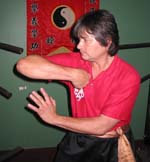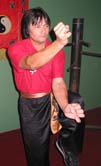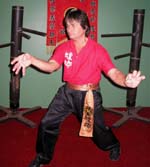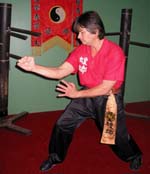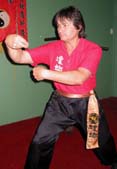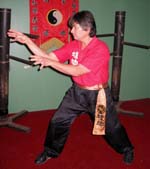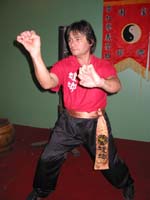
|
Chow Gar FormsAs a student progresses through the different levels of Chow Gar Tong Long (Southern Praying Mantis) kung fu, the student will learn new forms. A form is a series of techniques strung together in a sequence. The form brings together all the techniques and knowledge that the student has learned at that particular level. When a student learns a new form, they are also learning the techniques (with and without weapons) associated with that form. After a student has studied a Chow Gar form for a suitable amount of time (as determined by Si-fu), he/she will be permitted to attend a grading for that form. A grading is a special training session where the student is required to prove their prowess in the form to Si-fu. If the student passes the grading, they will be able to start learning the Chow Gar form at the next level. At the Australian School of Kung Fu and Tai Chi, the Chow Gar form a student is currently studying is represented by a coloured patch on that student's belt. New students of Chow Gar start with a black belt. When they pass a grading, they receive a new patch for their belt. There are 8 Chow Gar forms a student must successfully learn before being granted a red belt. The red belt indicates a senior student. It typically takes at least 6 years of regular training for a student to receive a red belt. Following the initial red belt, there are then 7 degrees of red belt. When a student has completed the 7th degree, they would be awarded with a gold belt. This is the highest level a practitioner of Chow Gar can attain and would take at least 20 years of regular training. The first 8 forms in Chow Gar Tong Long are listed below. The first Chow Gar form is represented by a black belt with no patch. Each subsequent Chow Gar form is represented by a patch, the colour of which is shown next to the form's name.
Upon successful completion of Bo Sim Sau, the student will be awarded their red belt.
|











